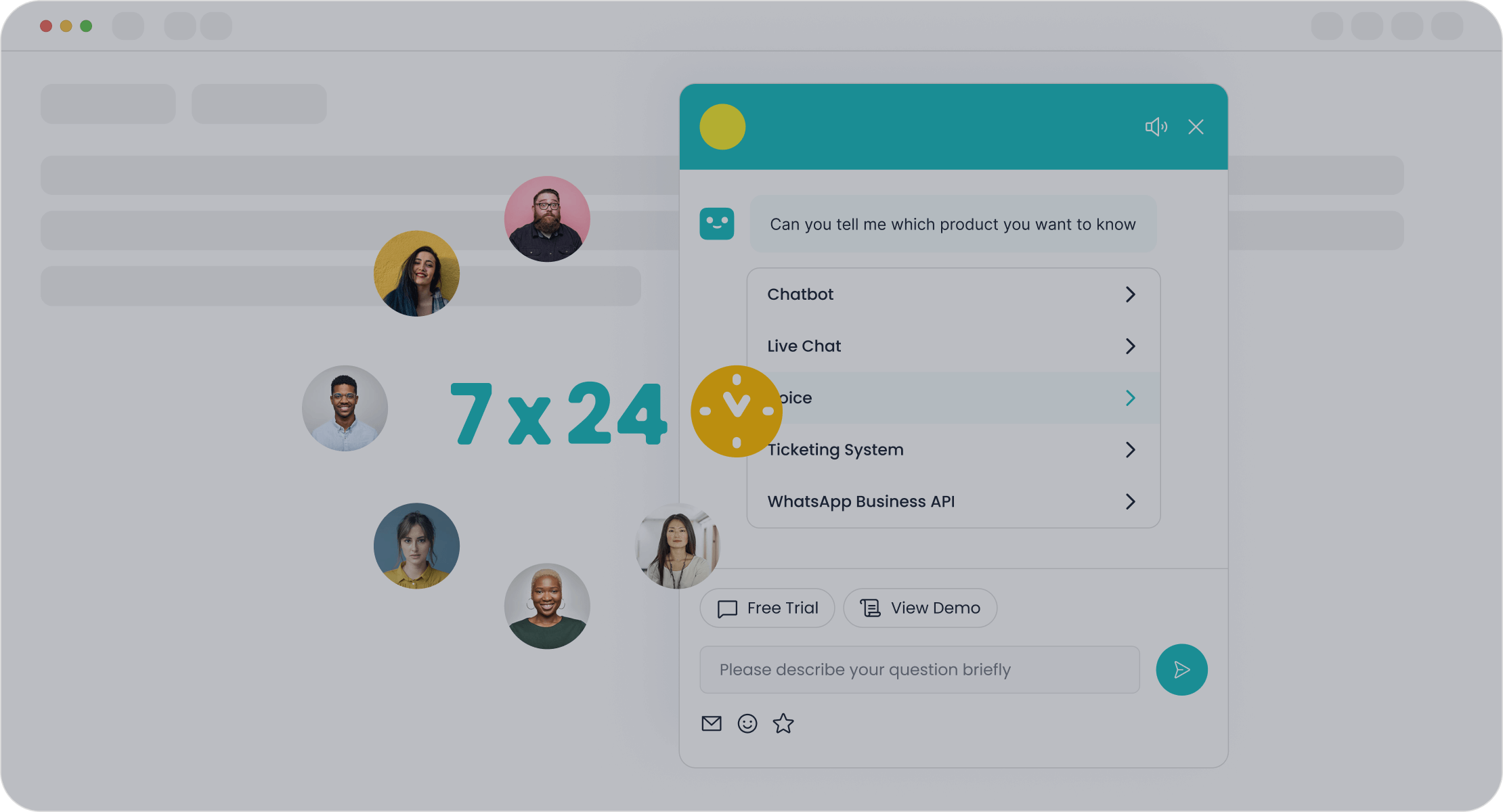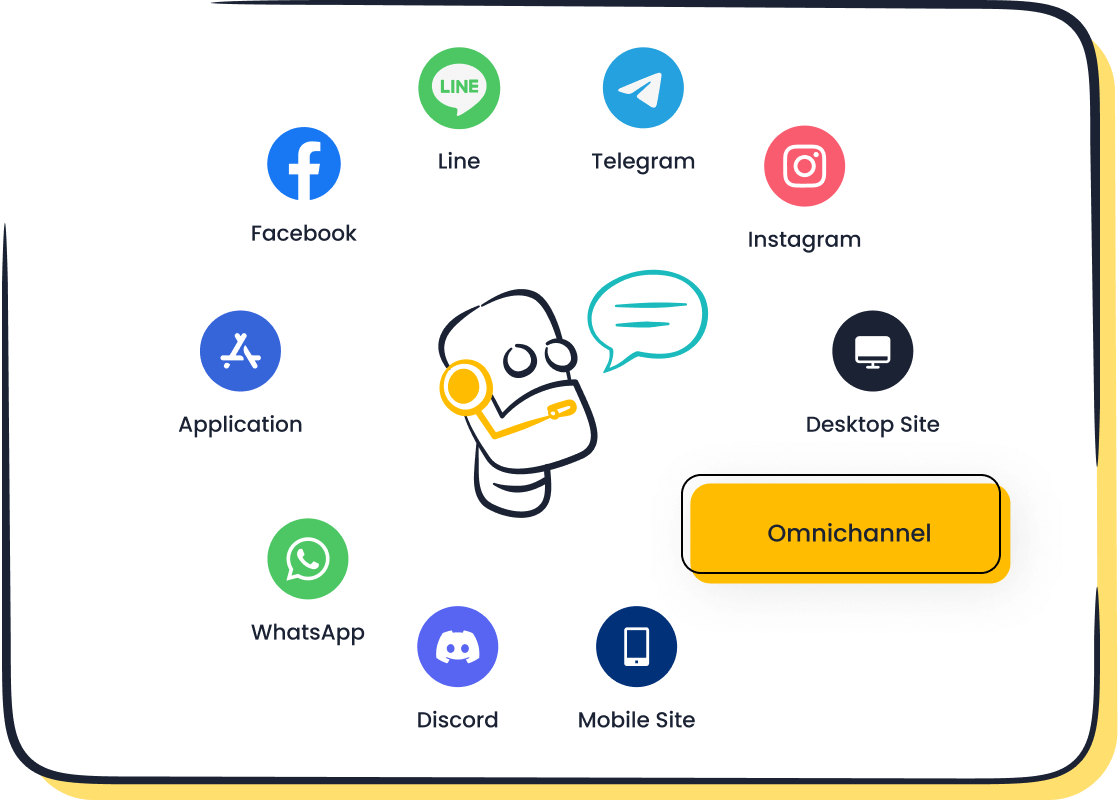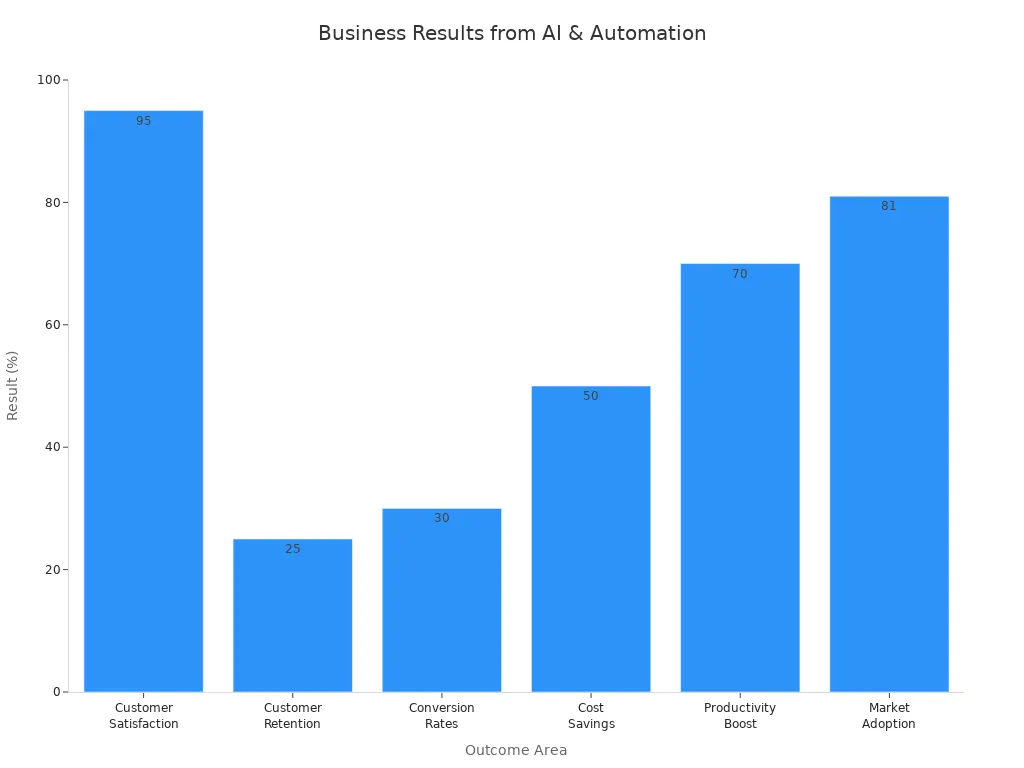Proactive Customer Support Made Easy with These Tips

Picture this: You spot a problem before your customer even notices. You reach out, fix it, and leave them smiling. That’s the power of proactive customer support. Unlike reactive support, where you only help after complaints, proactive customer support lets you anticipate issues and step in early. Businesses using Sobot and Sobot AI see real results—AI-powered proactive support tools can boost retention rates by up to 67%. Sobot call center solutions make it easy for any business to start this journey.
Proactive Customer Support Defined

Proactive vs. Reactive Service
You might wonder what makes proactive customer support different from the usual way of helping customers. Let’s break it down:
| Aspect | Proactive Customer Service | Reactive Customer Service |
|---|---|---|
| Timing | Anticipates and addresses issues before they arise | Responds only after customers initiate contact due to problems |
| Approach | Reaches out to customers with assistance and solutions | Waits for customers to report problems |
| Impact on Customer | Enhances customer experience, retention, and brand reputation | Can lead to poor experience, delayed resolutions, inefficiency, and reduced loyalty |
| Technology Use | Leverages AI chatbots and analytics to predict and solve issues early | Relies on customers to report problems first |
| Business Advantage | Provides strategic advantage in competitive markets | May cause customer frustration and loss of loyalty |
Proactive customer support means you reach out first. You spot issues, send alerts, or offer help before your customer even asks. For example, you might let someone know about a shipping delay or suggest a helpful product tip. In contrast, reactive customer service waits for the customer to complain or ask for help. This old way often leads to frustration and longer wait times.
With tools like Sobot’s AI-powered chatbot, you can easily move from reactive to proactive customer service. Sobot helps you predict what your customers need and gives you the power to solve problems early. This approach saves time for both you and your customers.
Key Benefits for Customer Satisfaction
When you use proactive customer support, you make life easier for your customers. Here are some key benefits:
- You reduce the number of problems customers face by fixing issues before they grow.
- Customers feel valued because you reach out first, which boosts customer satisfaction and loyalty.
- Proactive customer service helps you scale support without hiring more agents. Chatbots like Sobot’s can handle common questions 24/7.
- You build a strong brand reputation. People remember when you help them before they even ask.
- Studies show that 75% of customers feel better about a company after a proactive call (inContact study).
- Companies see a 3-5% increase in customer retention and higher Net Promoter Scores when they use proactive support strategies.
Tip: Proactive customer support not only prevents customer frustration but also increases sales and repeat purchases. Sobot’s omnichannel solutions make it simple to reach customers on their favorite platforms, so you never miss a chance to help.
Why Proactive Customer Service Matters
Impact on Customer Loyalty
When you use proactive customer service, you build trust with your customers. People like it when you reach out first and solve problems before they even notice. This approach creates strong emotional connections. Loyal customers spend more and come back often. In fact, research shows loyal customers spend 67% more than new ones and are 64% more likely to buy again. When you offer consistent support across channels and act on feedback, you make customers feel valued. This helps improve retention and reduce churn rates. If you keep helping customers before they ask, you turn them into fans who tell others about your brand. That’s how you improve retention and reduce churn rates at the same time.
Proactive customer service is not just about fixing problems. It’s about making every customer experience smooth and memorable.
Reducing Costs and Workload
Proactive customer service does more than keep customers happy. It also saves your business money and time. When you solve issues early, you get fewer support calls and emails. A Deloitte study found that proactive engagement can cut inbound contact volumes by about 15% (Deloitte). AI chatbots, like Sobot’s, handle routine questions 24/7. This means your team can focus on complex cases. You don’t need as many agents working night shifts, which lowers costs. AI-powered tools also predict busy times and help you plan better. This way, you reduce churn rates, improve retention, and keep your team from feeling overwhelmed.
- AI chatbots answer common questions fast.
- Predictive analytics spot problems before they grow.
- Fewer tickets mean less stress for your support team.
Sobot’s Role in Enhancing Service
Sobot makes proactive customer service easy for any business. With Sobot’s AI-powered chatbot, you can analyze up to 95% of customer interactions. This gives you real-time insights into what your customers need. Sobot’s automation tools help you respond quickly and accurately, which boosts customer satisfaction and improves retention. Companies using Sobot have seen a 25% drop in costs and a 6X jump in operational efficiency. For example, OPPO used Sobot to handle more questions with fewer agents and saw a big increase in customer loyalty. Sobot’s tools help you reduce churn rates by solving problems early and keeping customers happy. You get better data, faster responses, and a smoother customer experience.
| Benefit | Sobot’s Impact |
|---|---|
| Operational Efficiency | 6X increase |
| Cost Reduction | 25% decrease |
| Customer Satisfaction Score | Up to 95% |
When you use Sobot, you make proactive customer service simple and effective. You improve retention, reduce churn, and create loyal customers who stick with your brand.
Practical Tips for Proactive Customer Support

You want to make your customers happy before they even ask for help. Here are some practical ways to bring proactive customer support to life in your business. These tips work for any company, big or small. Let’s dive in!

Leverage AI and Automation with Sobot Chatbot
AI and automation can change the way you help your customers. With Sobot Chatbot, you can handle regular questions any time of day. The chatbot works 24/7, so your customers always get answers fast. You save money because you don’t need as many agents working late hours. Sobot Chatbot also speaks many languages, so you can help people from all over the world.
Here’s what you can do:
- Set up Sobot Chatbot to answer common questions and guide customers to self-service options.
- Use automated customer interactions to send proactive updates, like order status or delivery changes.
- Let the chatbot collect customer feedback after each chat to improve your service.
- Train your team to work with the chatbot, so they can focus on more complex problems.
Companies using Sobot Chatbot have seen up to a 95% improvement in customer satisfaction and a 25% increase in retention rates. You also get up to 50% cost savings by letting automation handle routine tasks.
| Result Area | Sobot Chatbot Impact |
|---|---|
| Customer Satisfaction | Up to 95% improvement |
| Customer Retention | 25% increase |
| Cost Savings | Up to 50% reduction |
| Productivity Boost | 70% increase |
| Proactive Engagement | Predictive analytics reduce support by 30% |

You can start small. Try using the chatbot for one type of question, then add more as you go. Always check the results and adjust your approach. This way, you build a strong foundation for proactive customer support.
Use Omnichannel Solutions for Seamless Support
Your customers use many channels—chat, email, phone, and social media. Omnichannel solutions like Sobot bring all these channels together in one place. You see every message and every step of the customer journey mapping. This means you never miss a chance for proactive engagement.
Here’s how to make the most of omnichannel support:
- Connect all your communication channels to Sobot’s unified workspace.
- Use customer journey mapping to spot where customers might need help.
- Let AI handle simple questions, so your team can focus on more important issues.
- Make sure your team can switch between channels without losing track of the conversation.
When you use omnichannel solutions, you give customers a smooth experience. They don’t have to repeat themselves. You can send proactive updates on their favorite channel, which keeps them informed and happy.
Omnichannel support also helps you gather feedback from every touchpoint. You see patterns and can act quickly if something goes wrong. This is how you build trust and loyalty.
Build and Maintain a Knowledge Base
A good knowledge base is like a library for your customers and your team. It holds answers to common questions and guides for using your products. With Sobot, you can build a knowledge base that powers both self-service and automated customer interactions.
Why does this matter?
- Customers find answers on their own, which means fewer support tickets.
- Agents solve problems faster because they have the right information at their fingertips.
- You improve first-contact resolution rates, making customers happier.
Steps to get started:
- List the most common questions your customers ask.
- Write clear, simple answers and add them to your knowledge base.
- Update the knowledge base often, especially when you launch new products or services.
- Use AI to suggest articles to customers during chats or calls.
OPPO used Sobot to optimize its knowledge base, cutting maintenance work by 90%. Their chatbot now solves 83% of questions on the first try, and customers give a 94% positive feedback rate.
A strong knowledge base supports self-service options and makes proactive customer support much easier.
Send Timely Notifications and Reminders
Don’t wait for customers to ask about their orders or appointments. Send proactive updates and reminders before they need to reach out. This is proactive customer communication at its best.
Best practices for sending notifications:
- Choose the right channel—some people prefer SMS, others like email or WhatsApp.
- Personalize your messages. Use the customer’s name and details about their order or account.
- Set up automated workflows in Sobot to trigger reminders for things like renewals, deliveries, or upcoming events.
- Keep messages short and clear. Too many notifications can annoy customers, so find the right balance.
Tip: Always respect privacy rules and let customers choose how often they get updates.
When you send proactive updates, you prevent problems before they start. Customers feel cared for, and you reduce the number of support requests.
Personalize Customer Interactions
Personalization makes every customer feel special. When you use data from customer journey mapping, you can tailor your messages and offers to each person. Sobot’s omnichannel solution helps you see the full picture, so you know what each customer needs.
Ways to personalize support:
- Greet customers by name and remember their preferences.
- Suggest products or services based on their past behavior.
- Use real-time data to offer help before customers ask.
- Send proactive outreach messages to welcome new users or check in after a purchase.
A recent survey found that 82% of consumers say personalized experiences influence their brand choice (Medallia Market Research). Companies that personalize well see more repeat business and higher loyalty.
Personalization leads to more proactive engagement and stronger relationships. Customers are more likely to return and recommend your brand.
Gather and Act on Customer Feedback
You can’t improve if you don’t listen. Make it easy for customers to share their thoughts. Use feedback loops to collect, analyze, and act on customer feedback at every stage of the customer journey mapping.
How to gather feedback:
- Add surveys to your website, app, or after support chats.
- Use feedback widgets so customers can leave comments anytime.
- Track customer behavior to spot trends and pain points.
- Hold interviews or focus groups for deeper insights.
- Monitor social media for real-time feedback.
Once you gather feedback, organize it and look for patterns. Share important findings with your team. Take action quickly, and let customers know you listened. This closes the feedback loop and shows you care.
Atlassian used AI-powered feedback loops to cut analysis time from weeks to hours. They fixed problems faster and moved from reactive to proactive support.
Sobot makes it easy to automate feedback collection and reporting. You can set up alerts for negative feedback, so you can step in before issues grow.
Real-World Success: OPPO’s Proactive Support Story
Let’s look at OPPO, a global smart device brand. During busy shopping seasons, OPPO faced a flood of customer questions. They used Sobot’s chatbot and ticketing system to handle repetitive queries and free up agents for complex cases. Sobot also helped OPPO build a smarter knowledge base, cutting maintenance work by 90%. The results? An 83% chatbot resolution rate, 94% positive feedback, and a 57% jump in repurchase rates. OPPO’s story shows how proactive support solutions and automated customer interactions can transform your business.
Action Steps for Your Team
Ready to get started? Here’s a simple checklist:
- Set up Sobot Chatbot for automated customer interactions and self-service options.
- Connect all your channels with Sobot’s omnichannel solution.
- Build or update your knowledge base.
- Automate proactive updates and reminders.
- Personalize every customer touchpoint using data from customer journey mapping.
- Create feedback loops to gather feedback and act on it fast.
- Train your team to use these tools and review results often.
Start with one or two tips, then add more as you grow. Proactive outreach and engagement will soon become second nature.
Best Practices in Proactive Customer Support
Quality Assurance and Training
You want your team to deliver great service every time. That starts with strong customer service training. When you train your agents well, they spot problems early and fix them before they grow. You help them learn pattern recognition, product knowledge, and how to use tools like Sobot’s AI-powered workspace. This training builds a proactive mindset.
Here are some ways to boost customer support quality:
- Update your training often. Teach agents how to use new features and handle new types of questions.
- Focus on empathy and active listening. These skills help your team connect with customers and solve issues faster.
- Use data-driven feedback. Review chats and calls to spot trends and guide your team.
- Modernize your quality assurance templates. Include things like empathy and personalized support, not just speed.
Well-trained teams solve problems before they get big. They also build trust and loyalty, which keeps customers coming back.
Companies like Pinnaql have seen big gains by investing in both quality assurance and customer service training. Their focus on continuous learning led to higher satisfaction and business growth.
Data Privacy and Transparency
Customers trust you with their information. You need to keep that trust. Make your data privacy rules clear and easy to understand. Always ask for permission before collecting or using customer data. Give customers options to opt in or out.
Key steps for strong privacy and transparency:
- Use encryption and firewalls to protect sensitive data.
- Train your team on privacy rules and security best practices.
- Share privacy policies in simple language or visuals.
- Set up feedback channels so customers can ask questions or raise concerns.
- Stay up to date with laws like GDPR and CCPA.
Tip: Balance personalization with privacy. Let customers control their data and explain how you use it.
Sobot’s platform uses advanced security and privacy features to help you protect customer data and build trust.
Continuous Improvement
You can always make your support better. The best practices in proactive customer support include regular reviews and updates. Try using methods like Plan-Do-Check-Act (PDCA) or Kaizen to guide your improvements.
Here’s how you can keep getting better:
- Collect feedback from customers after every interaction.
- Track key numbers like First Response Time and Customer Effort Score.
- Empower your team to suggest changes and try new ideas.
- Use tools like Sobot’s analytics to spot trends and act fast.
- Celebrate wins and share lessons learned with your team.
Continuous improvement means you never stop learning. You adapt to new customer needs and keep your service fresh.
When you combine customer service training, privacy, and a drive to improve, you set your team up for long-term success.
Overcoming Challenges in Proactive Customer Service
Every business faces bumps when trying to deliver proactive customer service. You might see slow response times, agent overload, or confusion between teams. Let’s break down the biggest challenges and see how you can tackle them with the right tools and mindset.
Managing Multiple Channels
Customers reach out on many platforms—chat, email, phone, and social media. If you don’t connect these channels, you risk missing messages or repeating work. Here are some common hurdles:
- Slow response times frustrate customers.
- Frequent transfers make people repeat their issues.
- Data silos cause confusion and missed opportunities.
- Choosing the right support channels can be tricky.
- Employee burnout rises when agents juggle too many systems.
You can solve these problems by using an omnichannel platform like Sobot. Sobot brings all your channels into one workspace. You see every message in one place, so you never lose track. Real-time monitoring tools help you spot issues as they happen. AI chatbots handle simple questions, giving your team more time for complex cases. Self-service options let customers find answers on their own, which reduces ticket backlogs and keeps everyone happy.
Tip: Centralize your customer data and use real-time monitoring tools to catch problems early. This keeps your proactive customer service smooth and efficient.
Ensuring Consistency Across Teams
It’s tough to keep every team on the same page. Sometimes, departments don’t share information, or agents use different processes. This can confuse customers and slow down proactive customer service. Here’s how you can build consistency:
- Set clear rules for timelines and communication.
- Train your team in empathy, active listening, and product knowledge.
- Use a unified workspace like Sobot to give everyone access to the same customer info.
- Encourage creative problem-solving and quick responses.
- Offer self-service tools, like FAQs and knowledge bases, so customers and agents always have the right answers.
When you use Sobot, your teams work together better. Everyone sees the same data, so customers get the same great experience every time.
Measuring Success and Adjusting Strategies
You can’t improve what you don’t measure. To see if your proactive customer service works, track key metrics like:
| Metric Name | What It Shows |
|---|---|
| First Response Time | How fast you reply to customers |
| First Contact Resolution | How often you solve issues on the first try |
| Customer Satisfaction Score (CSAT) | How happy your customers are |
| Customer Effort Score (CES) | How easy it is for customers to get help |
| Net Promoter Score (NPS) | How likely customers are to recommend you |
Sobot’s analytics and real-time monitoring tools make it easy to track these numbers. You can collect feedback with surveys and see trends right away. If you spot a problem, adjust your training or update your self-service resources. Always close the loop by letting customers know you listened and made changes.
Note: Businesses that use feedback and data to adjust their proactive customer service see higher retention and lower churn rates. Keep improving, and your customers will notice.
You can make proactive customer support easy and effective. Start by using Sobot Chatbot for automated help or build a strong knowledge base. Many businesses see up to 30% lower costs and 25% higher satisfaction with these steps. Try one or two tips first. Want to see real results? Explore Sobot’s solutions or email us at marketing@sobot.io for more info.
Proactive customer support builds loyalty, saves time, and helps your business grow.
FAQ
What is proactive customer support?
Proactive customer support means you help customers before they ask for help. You spot issues early and reach out first. This approach keeps customers happy and loyal. Sobot’s AI tools make proactive customer support easy for any business.
How does Sobot help with proactive customer support?
Sobot uses AI chatbots and omnichannel solutions to spot problems fast. You can send updates, answer questions 24/7, and collect feedback. For example, OPPO used Sobot to boost their chatbot resolution rate to 83% and increase repurchase rates by 57%.
Why should I use proactive customer support instead of reactive support?
Proactive customer support saves you time and money. You fix problems before they grow. Studies show 75% of customers feel better about a company after a proactive call (source). You also see higher customer satisfaction and loyalty.
Can proactive customer support work on all channels?
Yes! With Sobot’s omnichannel platform, you connect chat, email, phone, and social media in one place. You never miss a message. Customers get help on their favorite channel, making proactive customer support seamless and effective.
Tip: Start small with proactive customer support. Use Sobot Chatbot for common questions, then add more channels as you grow.
| Benefit | Proactive Customer Support Impact |
|---|---|
| Customer Satisfaction | Up to 95% improvement |
| Cost Savings | Up to 50% reduction |
| Agent Productivity | 70% increase |
See Also
Top Ten Ways To Improve Customer Satisfaction Via Live Chat
Ten Key Factors For Selecting Social Media Support Tools
Enhance SaaS Customer Service Using Effective Live Chat Methods
Ten Essential Steps To Implement Shopify Live Chat Support
How To Excel At Providing Customer Support Through Live Chat
